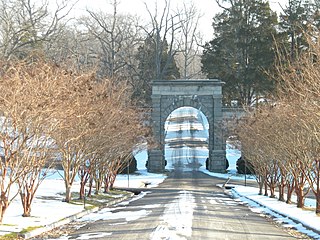
Blandford Cemetery is a historic cemetery located in Petersburg, Virginia. The oldest stone, marking the grave of Richard Yarbrough, reads 1702. It is located adjacent to the People's Memorial Cemetery, a historic African-American cemetery.

West Point Cemetery is a historic cemetery on the grounds of the United States Military Academy in West Point, New York. It overlooks the Hudson River, and served as a burial ground for Revolutionary War soldiers and early West Point inhabitants long before 1817, when it was officially designated as a military cemetery.
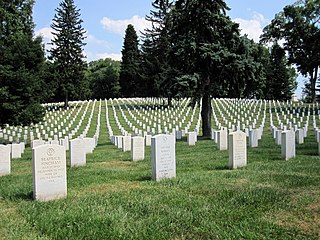
Culpeper National Cemetery is a United States National Cemetery located in the town of Culpeper, in Culpeper County, Virginia. Administered by the United States Department of Veterans Affairs, it encompasses 29.6 acres (120,000 m2) of land, and as 2021, had over 14,000 interments.

Philadelphia National Cemetery is a United States National Cemetery located in the West Oak Lane neighborhood of Philadelphia, Pennsylvania. It was established in 1862 as nine leased lots in seven private cemeteries in the Philadelphia region. In 1881, the current location was established and the graves of soldiers were reinterred from the various leased lots. It is administered by the United States Department of Veterans Affairs, and managed from offices at Washington Crossing National Cemetery. It is 13 acres in size and contains 13,202 burials.
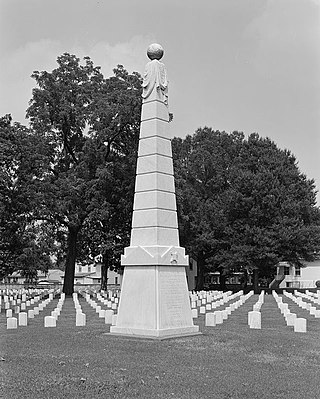
City Point National Cemetery is a United States National Cemetery in the community of City Point within the city of Hopewell, Virginia. Administered by the United States Department of Veterans Affairs, it encompasses 6.7 acres (2.7 ha), and as of the end of 2005, had 6,909 interments. It is managed by Hampton National Cemetery.
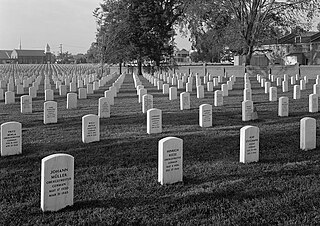
Hampton National Cemetery is a United States National Cemetery in the city of Hampton, Virginia. It encompasses 27.1 acres (11.0 ha), and as of 2014, had over 30,000 interments. There are two separate parts to this facility. The original cemetery is called the "Hampton Section" and is located on Cemetery Road in Hampton, VA. It is on the western side of I-64. The new section which is called the "Phoebus Addition" or the "Phoebus Section" West County Street in Hampton, VA east of I-64. It is less than a mile from the original cemetery. Both sections of the Hampton National Cemetery are closed to new interments.

Cold Harbor National Cemetery is a United States National Cemetery in Mechanicsville, Hanover County, Virginia. It encompasses 1.4 acres (5,700 m2), and as of the end of 2005, had 2,110 interments. Administered by the United States Department of Veterans Affairs, it is managed by the Hampton National Cemetery.

Winchester National Cemetery is a United States National Cemetery located in the city of Winchester in Frederick County, Virginia. Administered by the United States Department of Veterans Affairs, it encompasses 4.9 acres (2.0 ha), and as of the end of 2005, it had 5,561 interments. It is closed to new interments.

Magnolia Cemetery is a historic city cemetery located in Mobile, Alabama. Filled with many elaborate Victorian-era monuments, it spans more than 100 acres (40 ha). It served as Mobile's primary, and almost exclusive, burial place during the 19th century. It is the final resting place for many of Mobile's 19th- and early 20th-century citizens. The cemetery is roughly bounded by Frye Street to the north, Gayle Street to the east, and Ann Street to the west. Virginia Street originally formed the southern border before the cemetery was expanded and now cuts east–west through the center of the cemetery. Magnolia contains more than 80,000 burials and remains an active, though very limited, burial site today.
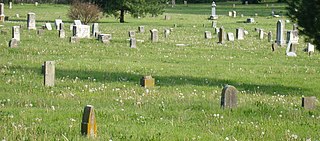
African Cemetery No. 2, also known as The Cemetery of the Union Benevolent Society No. 2, is a historic burial site located in Lexington, Kentucky, United States.

The Colored Soldiers Monument in Frankfort, Kentucky's Green Hill Cemetery, at the junction of US 60 and US 421, is the only Kentucky monument honoring black soldiers that participated in the American Civil War, and one of only four in the entire United States. Erected by the Woman's Relief Corps No. 8, an auxiliary of the Grand Army of the Republic, it was unveiled on July 4, 1924. The only other monument built by GAR in Kentucky is the GAR Monument in Covington.

The Enid Cemetery is a cemetery in Enid, Oklahoma. Together with the Calvary Catholic Cemetery, it has been listed on the National Register of Historic Places since 1996. Opened in the 1890s, the two cemeteries were designed in the rural cemetery style. Only a portion of the Enid Cemetery contributes to the historical significance: the Original (1898), First (1918), Second (1920), and Evergreen (1923) additions. Together these encompass a 967 by 1,318-foot (402 m) area historical section.

Mount Moor African-American Cemetery, also known as Mount Moor Cemetery, is a historic African American cemetery located at Palisades Center, West Nyack in Rockland County, New York. It was established in 1849 and contains approximately 90 known graves including veterans of the Civil War, Spanish-American War and World War I. Among the notable burials are Lafayette Logan, a Buffalo Soldier who fought with the 54th Massachusetts Infantry Regiment and several members of the 26th United States Colored Infantry Regiment.

The Oakland Cemetery is a 40-acre (16 ha) public cemetery maintained by the city of Fort Dodge, Iowa, United States. Property for the cemetery was set aside in 1859. It was laid out the same year by Egbert Bagg, an architect and civil engineer from Utica, New York. The graves and monuments are arranged around the natural contours of the hills that overlook Soldier Creek in a natural park-like setting. It is considered a good and rare example of a rural cemetery in North Central Iowa. It has been listed as an historic district on the National Register of Historic Places since 2000.

East Hill Cemetery, also known as Maryland Hill, Round Hill, Rooster Hill, and City Cemetery, is a historic cemetery located at Bristol, Virginia. It is an American Civil War-era cemetery established in 1857, with sections for Confederate soldiers and veterans as well as a small section for African American burials. In 1995, the United Daughters of the Confederacy put up a small commemorative monument to the Civil War dead. Among its graves are the founders of the city, representatives of enslaved African-Americans, Civil War soldiers including those who died as a result of the war as well as those who survived the war, a Revolutionary War General of Militia Evan Shelby, and many who have made contributions to Bristol and the nation. It straddles the Tennessee-Virginia border.

Mount Zion Old School Baptist Church, also known as Mount Zion Primitive Baptist Church and Mount Zion Old School Predestinarian Baptist Church, is a historic Primitive Baptist church located at Gilberts Corner, Loudoun County, Virginia. It is now maintained by the Northern Virginia Regional Park Authority: the property including the adjoining cemetery is open from dawn to dusk and the church itself open on the fourth Sunday of various months, or by reservation for weddings and events.
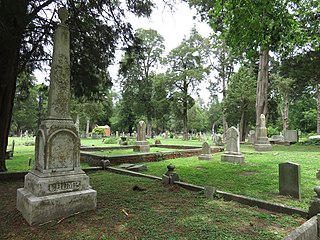
Cedar Hill Cemetery, also known as Green Hill Cemetery, is a historic cemetery and national historic district located at Suffolk, Virginia. The district encompasses four contributing structures, one contributing site, and three contributing objects in the a city-owned, 25-acre, public cemetery dating to 1802. Grave markers within the cemetery date from the early 19th century to the present day. This cemetery is a representative example of public cemetery planning and funerary artwork found in southeast Virginia and Suffolk. The contributing structures include the Darden (1938), Hosier, Hill (1933) and Brewer-Godwin mausoleums and the contributing objects include the Confederate Monument (1889) and World War I Monument.
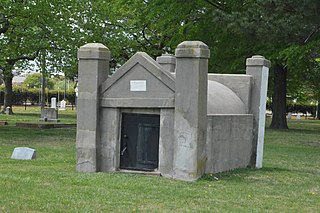
Elmwood Cemetery is a historic municipal cemetery located at Norfolk, Virginia. It was established in 1853, and is filled with monuments and mausoleums that embody the pathos and symbolism of the Christian view of death as a temporary sleep. A notable monument is the Recording Angel by William Couper (1853–1942) at the Couper Family plot. The Core Mausoleum (1910–1915) designed by Harold Van Buren Magonigle (1867–1935), with sculptures by Edward Field Sanford, Jr. (1886–1951), is another notable resource.






















